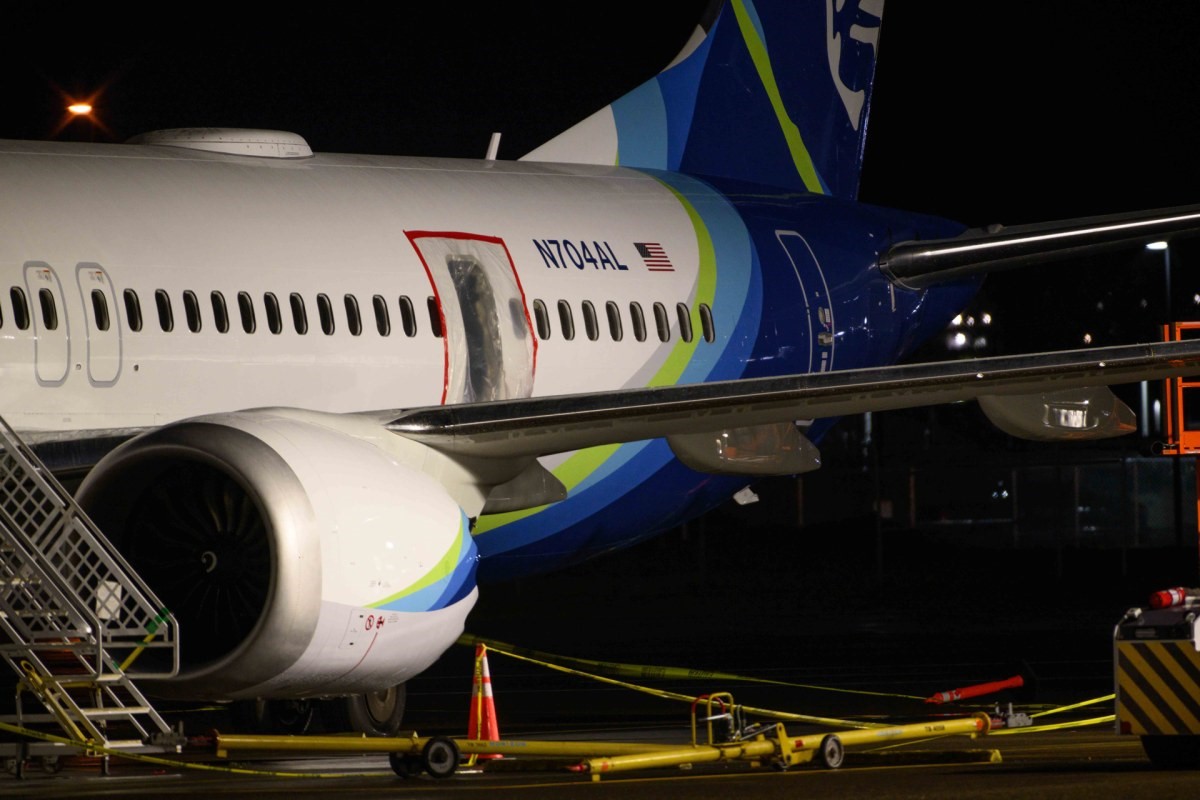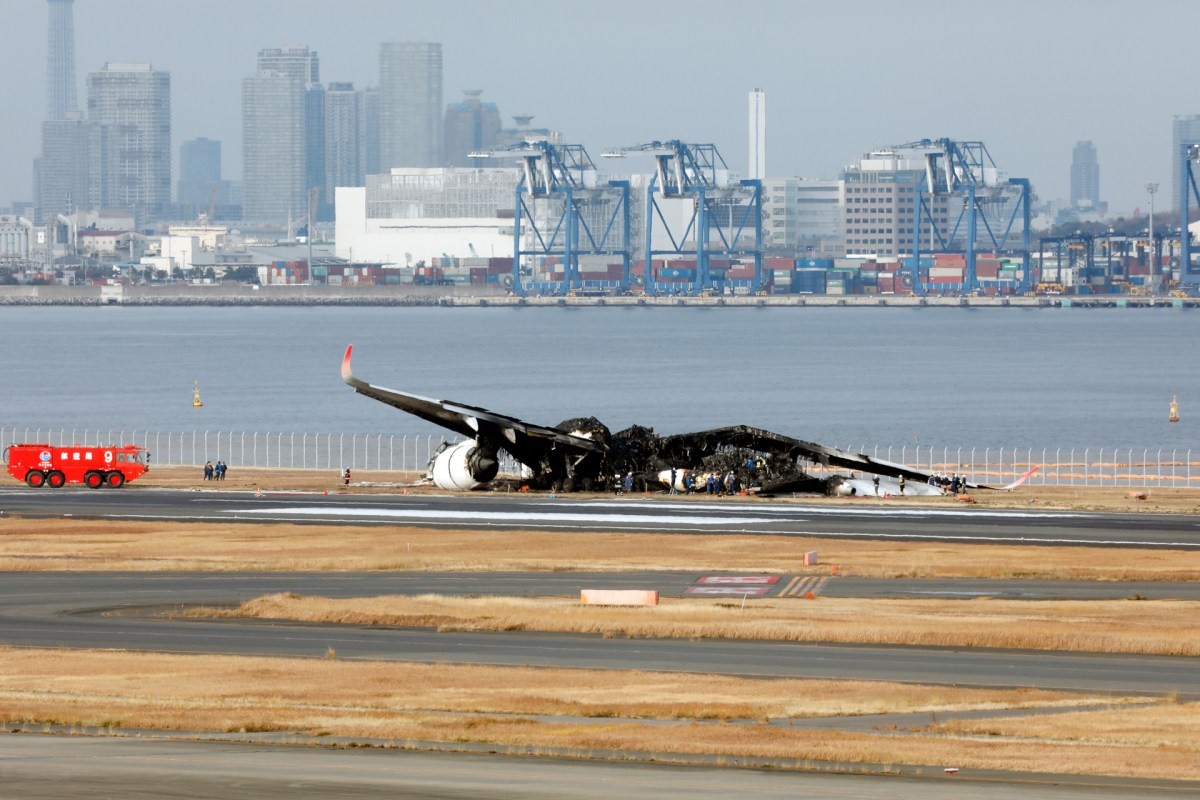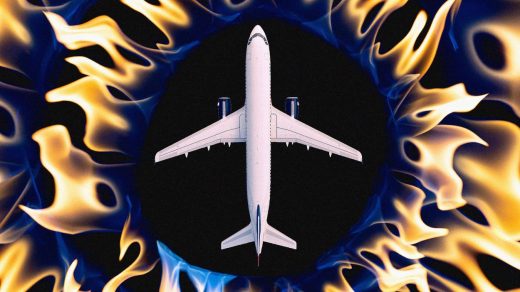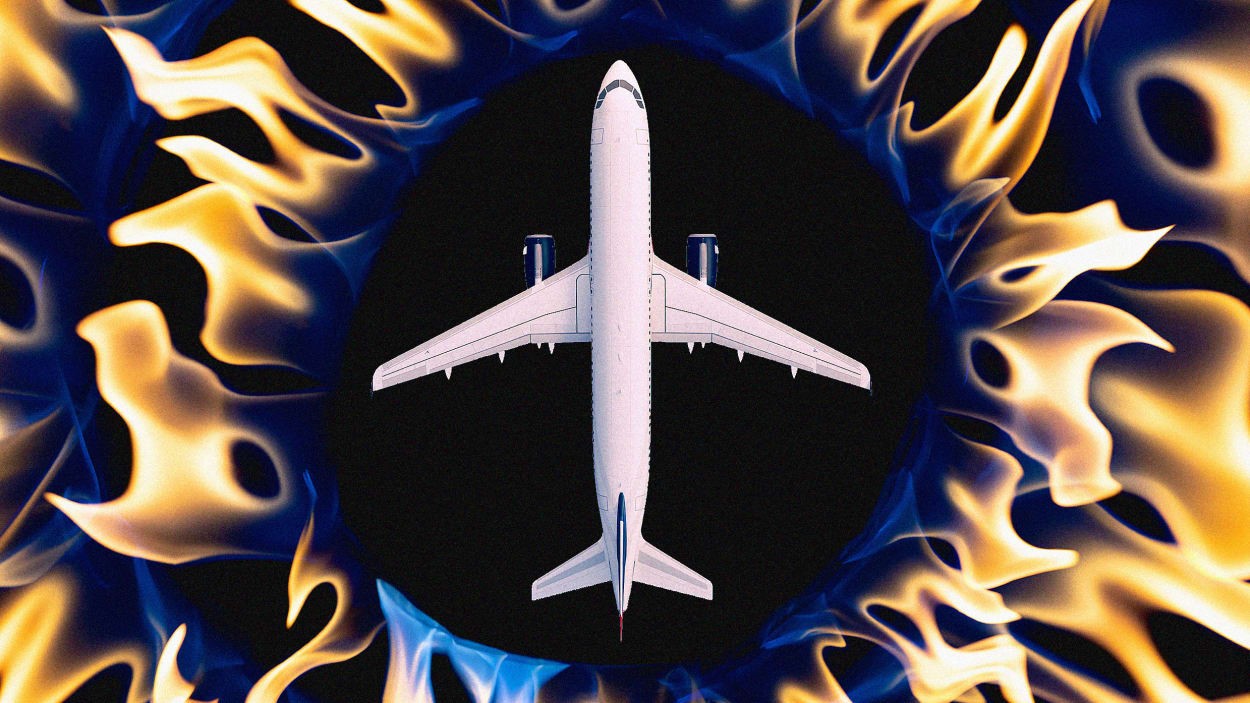The design secrets that make airplanes less likely to catch fire
By Rob Verger
The new year may only just be getting off the ground, but so far it has been a frightening and dangerous January in the world of commercial aviation. On January 2 in Tokyo, a Japan Airlines A350 collided with a Japan Coast Guard aircraft upon landing, with the widebody commercial airliner becoming engulfed in flames; the 379 people on board were able to evacuate as the aircraft burned, while five of the six people on the twin turboprop Coast Guard aircraft perished.
And on January 5, on an Alaska Airlines 737 MAX 9 aircraft, a component called a door plug separated from the plane at about 16,000 feet, leaving a hazardous gaping void in the aircraft’s body; the plane landed safely in Portland, Oregon. Other MAX 9 aircraft have been grounded and are being inspected with problems surfacing in both Alaska’s and United’s fleet.
The fiery crash in Tokyo, with hundreds of people evacuating the aircraft through just three emergency exits before the large jet was completely lost in the conflagration, is a reminder of just how devastating fire on an aircraft can be. Throughout aviation’s history, “fire has always been a major threat,” observes Anthony Brickhouse, a professor of aerospace safety at Embry-Riddle Aeronautical University.
Here’s what to know about how modern airliners are designed to cope with fires, as well as a few best practices for passengers to keep in mind when it comes to handling potential emergencies.

Five minutes
Picture the interior of an aircraft as you walk on board. “Pretty much everything you touch, sit on, walk on, has a fire requirement—a flammability test method,” says Robert Ochs, who manages the Fire Safety Branch at the FAA William J. Hughes Technical Center. Their goal there, he says, involves “trying our hardest to make sure that there are no fire-related injuries or deaths in commercial aviation.”
In general, there are two different types of fires an aircraft could experience: one in the air, and another on the ground after a crash. The various materials on board an aircraft are supposed to handle those types of scenarios in different ways.
“For an in-flight fire, the goal is the prevention of any sort of propagation,” Ochs explains. Imagine that a fire starts somehow while the aircraft is airborne. “If a material nearby is exposed to that, it should only propagate a very small amount—like an inch, or something like that—and it should only be able to burn for like two or three seconds, and that’s it.” That standard generally applies to materials that aren’t accessible to people while the plane is in flight, like a space behind a panel. In short, the goal with in-flight fires is to keep them from spreading.
Then there’s a post-crash fire, such as what happened with Japan Airlines flight 516. In cases where there is a fire outside the aircraft, the goal is for the materials inside the cabin to resist the heat from outside. “That large fire can then radiate enough heat to get the interior materials burning,” he says. The goal with modern airliners is: “Can they resist doing that for at least five minutes? So that’s what we’re trying to do—we’re trying to buy people, occupants of an aircraft, about five minutes of evacuation time.”
The materials also shouldn’t produce copious amounts of smoke or “toxic gasses” during that five-minute window, Ochs adds.
So, how do the onboard components accomplish these important tasks? “There are additives and flame retardants that are put into material formulations in order to meet the requirements,” Ochs says. More specifically, the answer involves compounds with long names that you probably wouldn’t want to eat for breakfast. “Common thermoplastic polymers developed with fire retardant properties for use in aircraft interiors include Polyamide-imide (PAI), Polyetheretherketone (PEEK), Polyaryletherketone (PAEK), and Polyphenylsulfone (PPSU),” writes Sonya Brown, a senior lecturer in aerospace design at the University of New South Wales Sydney in Australia, via email.
Evacuating an aircraft on fire is, of course, a scenario in which timing matters intensely. The standard that modern planes have to meet is just 90 seconds for a complete evacuation, with only half the emergency exits available. The materials are designed to try to give passengers five minutes to accomplish this task. In the Tokyo crash, with a broken intercom system and only three exits available, everything happened more slowly. It took 18 minutes for everyone to get off the burning aircraft.

Past lessons
Accidents from past decades illustrate just how important it is for an aircraft’s interior to be able to resist burning, or to not burn in a way that produces thick smoke and fumes. One tragic incident involved a British Airtours 737, which caught on fire due to an engine problem during takeoff in 1985 in Manchester, England. One survivor of the disaster told the BBC for a 2015 story that he saw a “curtain of black toxic fumes” inside the plane.
That accident, which killed 55 people, was a “watershed” moment, Ochs says. “Everybody should have been able to get out, and they didn’t,” he says. “It showed that the fire could get into the airplane very quickly.”
Ochs points to the mid-80s and early 90s as the time period for when important changes came into effect to make the interiors of aircraft better able to handle fire. Other improvements came into play this century, for instance regarding aircraft insulation, as well as fuel tank explosion protection, a legacy of TWA flight 800.
There’s another wrinkle with aircraft like the Airbus A350 and the Boeing 787, which is the fact that they include large amounts of carbon fiber composites—a lighter material that has begun to replace aluminum in many airplanes. In simple terms, that’s carbon fiber mixed with epoxy. To get a better sense of why carbon fiber has become a material of choice for the aerospace industry, Byron Pipes, a professor of engineering at Purdue University, says to imagine the working end of a broom and all of its individual bristles. “If you sort of dip that broom, the ends of it, into a polymer [like epoxy], and it surrounded every one of the pieces of material there, that would be kind of a manifestation of what the carbon fiber would look like, but it’s five microns in diameter,” Pipes says. He says that he thinks carbon fiber composites should handle fire “as well or better” than aluminum.
Ochs, of the FAA, also says that carbon fiber composites can do a good job resisting burning. “The epoxy might burn out of a carbon fiber fuselage, but the carbon fibers themselves are going to stay in place,” he says. “So, the carbon fiber will afford five, ten-plus minutes of burn-through protection in a post-crash fire.”
Aircraft also make use of halon gas as a fire-suppression tool in places like the cargo hold, the engines, and in hand-held fire extinguishers in the cabin.
John Cox, a retired commercial pilot and the founder of Safety Operating Systems, referred to the crash and fire in Tokyo as a type of “worst-case scenario” due to the fact that it was “a fuel-fed fire.” Still, he references what went well and what video from inside the plane showed. “You can see smoke beginning to emerge or enter the cabin,” he says. “What you don’t see is that smoke being so toxic that people breathe it once and then pass out or die right there.”
Even if aircraft have been designed to buy passengers time in a fire, the flying public has a role to play too. “The aircraft can only do so much,” Brickhouse, of Embry-Riddle Aeronautical University, says. “Passengers need to be vigilant.” For example, he says that it’s important for passengers not to try to take carry-on bags with them during an evacuation. And wearing close-toed shoes and leaving them on during take-off and landing is important, too.
Another best practice? Wear your seatbelt.
(9)



